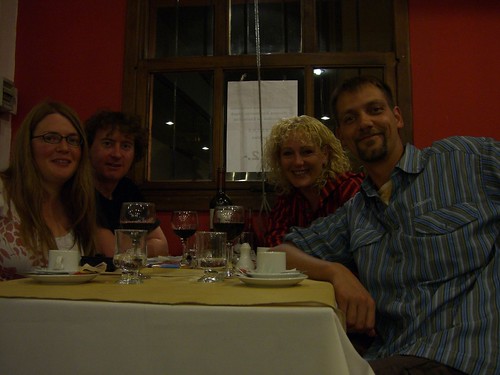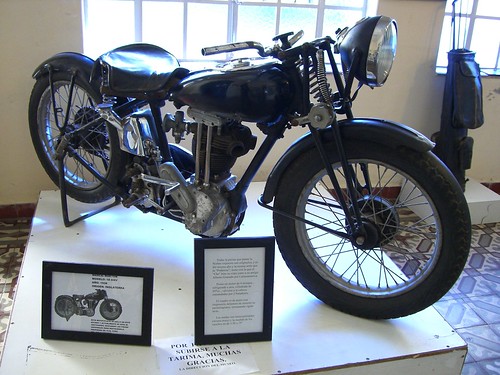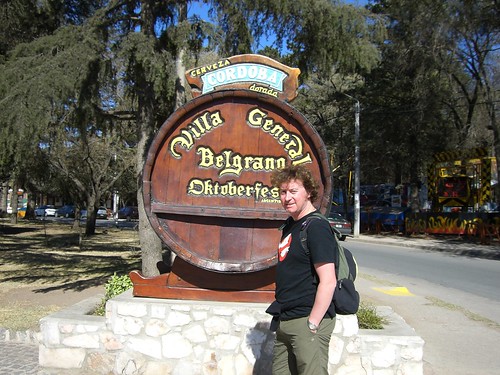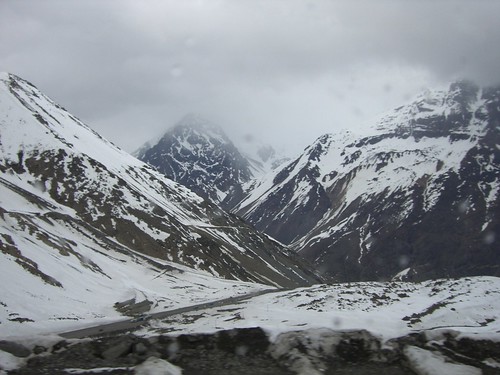Advertisement
Published: September 23rd 2006
From Easter Island, a mere 4.5 hour flight, night in Santiago, 7 hour bus to Mendoza and a 9 hour overnight bus brought us to Cordoba, the second city of Argentina. That's a lot of DVT potential! Luckily, to take our mind of that, the scenery crossings the Andres was stunning, alhough it was a tad weird to have skilifts passing overheard. To pass the hours once we crossed the border, we were serenaded by a very long CD of classic 80's hits, translated into Spanish - fancy a nice rendition of 'Eclipse Total del Amor' anyone? We can now vouch for the fact that 'Lady in Red' is no less irritating in translation, but at least laughing at some of the heartfelt performances and dubious translations in order to fit the tune helped entertain us.
By a stroke of good luck, shortly after arrival, we discovered some Dutch friends we'd met in Galapagos were also in the city until that evening, so spent a large part of the first day catching up with them. Naturally, it being 3 months since we´d left the country, we were dying to consume some bife de lomo and a few glasses of malbec, but were faced with the problem that our friends needed to leave for the bus station around 9.30, the time people usually think about getting ready to go out for dinner. After a few false starts and an enforced beer or two to kill time, we managed to find a good, and crucially open, parilla to celebrate our brief reunion in proper argentinian style.
Cordoba is a large university town, with plenty attractive buildings scattered around the town centre, countless churches and an excellent pedestrianised shopping area. Sadly, our backpacks already being quite full, we mainly had to settle for window shopping (whilst marvelling at the cheapness of everything after Germany, Australia and Chile). However, Luke did have a chance to replace his lost wedding ring, at long last - in a jewellers run by an Armenian-Argentinian U2 fanatic. I considered asking them to staple it to his finger this time, just to be on the safe side.
Cordoba is a pleasant city in which to spend a few days, but we were also keen to visit some of the towns of the surrounding sierras. For the princely sum of 50p, we took the bus out to Alta Gracia, where we'd heard the Jesuit estancia was worth visiting. It was fascinating to see how the estancia grew into a centre of agriculture, industry and commerce, promoting the growth of a town around it. The way that nothing was put to waste in those days was vividly illustrated in the museum by items like the chair made of animal hip bones, bound together with leather; a food bag made from a cows udder and the skin from horse's legs used to fashion basic boots from for the gauchos. Many of the rooms in the main building have been preserved to clearly show the lifestyle of the Jesuits owners. However, realising that the Jesuits cynically exploited the locals love of music as a way in which to make them come to church so they could convert them suddenly made the impressive collection of musical intruments less impressive.
The other top attraction in the town is the house in which Che Guevara lived from the age of 4, after his parents decided to move from Rosario to the drier climes of Alta Gracia to help his asthma. After locating the house in the midday heat, we were rewarded with another case of
fermature exceptionelle so had to run the gauntlet of the neighbours scary guarddogs further down the street once more. Filling time until it reopened, we took a stroll around town, discovering that the spanish tradition of siesta is still well and truely in favour. The museum contains lots of good photos, personal effects and background info, reinforced by the personal recollections from his childhood friends, former nanny etc. Sadly however, we missed the visit by Fidel Castro and Hugo Chavez by only a few months!
Villa General Belgrano was the destination for the following day. We knew that the town was founded by the survivors from the Graf Spree when it was scuttled in the River Plate but weren't quite sure what to expect from it. The town turned out to be a sort of cross between the alpine style of Bariloche with the fake-touristyness of El Calafate. But the setting is lovely with hills and resevoirs nearby for activities, and it's a big family tourist resort in the summer. It even has its own Oktoberfest next month. Staying off the main touristy high street, we had a pleasant day there, chatting to restaurant owners, including a granny who seemed over the moon that the funny gringos not only chose her place for lunch, but also cleared their plates and were able to chat to her.
Luckily for us, the only hostel was fully booked, so we missed the horror of sharing it with a bunch of school kids from Rosario, and checked into a Swiss-Argentinian run place instead, where we ended the night watching football with the owner, as Boca beat San Paulo to become the team with the most trophies worldwide. Football was a bit of a theme that day, as we managed to find a web cafe in the afternoon where Luke could listen to live coverage of Derry´s famous 0-0 victory over Paris San Germain. Sadly we won't be back in time for the 2nd leg either, so they'll just have to make it to the next round!




Advertisement
Tot: 0.068s; Tpl: 0.016s; cc: 13; qc: 27; dbt: 0.0226s; 1; m:domysql w:travelblog (10.17.0.13); sld: 1;
; mem: 1mb



